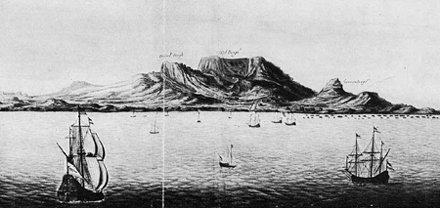Travel reports of sea heroes and adventurers of the 16th and 17th century > The Dutch East Indies Company
At the end of the 16th century, the Dutch succeeded in reaching the archipelago that is now Indonesia. The ships that had weathered the hardships of the voyage sailed back home with a rich cargo of spices. This success enticed other entrepreneurs to send out modest fleets of their own. However, within a few years after the first ships had returned, there were such large quantities of spices for sale that a surplus threatened. As a direct result, prices fell and the return on investment was not sufficient. But there was something else: the country (at least its Northern part) was still engaged in the rebellion against Spain. It was against this background that the Grand Pensionary Johan van Oldenbarnevelt urged groups of individual merchants to work in close cooperation with the government of the Republic of the United Netherlands. It took quite a bit of persuasion but his plan succeeded and the Geoctrooyeerde Vereenigde Oost-Indische Compagnie, (Chartered United East Indian Company), VOC for short and known abroad as the Dutch East Indies Company, was founded in 1602.

The VOC was not just a commercial company. Its articles of association stipulated that it would have a monopoly on trade in the territories lying to the east of the Cape of Good Hope. The VOC was also entitled to build strongholds, recruit soldiers and enter into agreements with foreign powers and sovereigns. The government of the Republic of the United Netherlands hoped that the company would grow to become a threat to the Spanish-Portuguese supremacy in Asia. This strategy worked and the VOC succeeded in building a large commercial empire in Asia.
The VOC was the more successful of the two large commercial companies in the United Netherlands. Twice a year, fleets of ships packed with spices sailed from the Far East to the home country. At the end of the 18th century, however, the company began to go downhill. The situation deteriorated to such an extent that the acronym VOC got to mean was Vergaan Onder Corruptie (Lost through corruption). But this is a bit of an exaggeration. The end of the VOC was due to structural problems, such as lack of shared capital, and to competition from the English East India Company. On their way home, the Dutch ships suffered heavy losses as a result of the naval war with England. When the Batavian Republic was formed in 1795, it inherited the bankrupt VOC’s assets. The new state had no other choice but to liquidate the company.
Read on: The West Indian Company
